Advertisement

How Cruise Control Systems Work
- Share Content on Facebook
- Share Content on LinkedIn
- Share Content on Flipboard
- Share Content on Reddit
- Share Content via Email
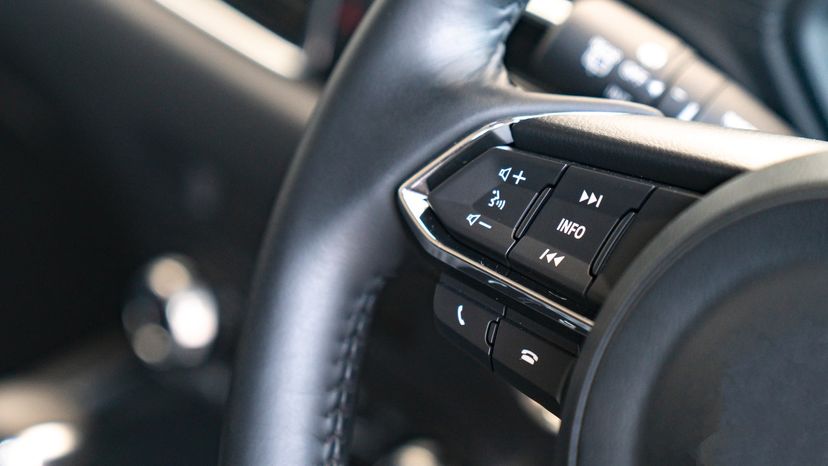
Cruise control is an invaluable feature on American cars. Without cruise control, long road trips would be more tiring, for the driver at least, and those of us suffering from lead-foot syndrome would probably get a lot more speeding tickets.
Cruise control is far more common on American cars than European cars, because the roads in America are generally bigger and straighter, and destinations are farther apart. With traffic continually increasing, basic cruise control is becoming less useful, but instead of becoming obsolete, cruise control systems are adapting to this new reality -- soon, cars will be equipped with adaptive cruise control, which will allow your car to follow the car in front of it while continually adjusting speed to maintain a safe distance.
In this article, we'll learn how a conventional cruise control system works, and then we'll take a look at adaptive cruise control systems that are under development.
What Cruise Control Does
Cruise control acceleration and deceleration, controlling the cruise control, adaptive cruise control.
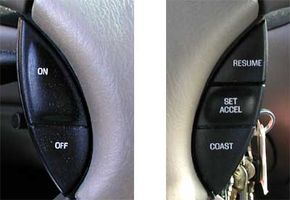
The cruise control system actually has a lot of functions other than controlling the speed of your car. For instance, the cruise control pictured below can accelerate or decelerate the car by 1 mph with the tap of a button. Hit the button five times to go 5 mph faster. There are also several important safety features -- the cruise control will disengage as soon as you hit the brake pedal, and it won't engage at speeds less than 25 mph (40 kph).
The system pictured below has five buttons: On, Off, Set/Accel, Resume and Coast. It also has a sixth control -- the brake pedal, and if your car has a manual transmission the clutch pedal is also hooked up to the cruise control.
- The on and off buttons don't actually do much. Hitting the on button does not do anything except tell the car that you might be hitting another button soon. The off button turns the cruise control off even if it is engaged. Some cruise controls don't have these buttons; instead, they turn off when the driver hits the brakes, and turn on when the driver hits the set button.
- The set/accel button tells the car to maintain the speed you are currently driving. If you hit the set button at 45 mph, the car will maintain your speed at 45 mph. Holding down the set/accel button will make the car accelerate; and on this car, tapping it once will make the car go 1 mph faster.
- If you recently disengaged the cruise control by hitting the brake pedal, hitting the resume button will command the car to accelerate back to the most recent speed setting.
- Holding down the coast button will cause the car to decelerate, just as if you took your foot completely off the gas. On this car, tapping the coast button once will cause the car to slow down by 1 mph.
- The brake pedal and clutch pedal each have a switch that disengages the cruise control as soon as the pedal is pressed, so you can shut off the cruise control with a light tap on the brake or clutch.
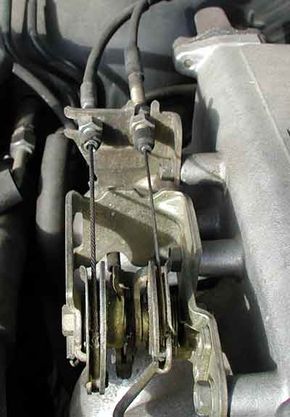
The cruise control system controls the speed of your car the same way you do -- by adjusting the throttle position . But cruise control actuates the throttle valve by a cable connected to an actuator , instead of by pressing a pedal. The throttle valve controls the power and speed of the engine by limiting how much air the engine takes in (see How Fuel Injection Systems Work for more details).
In the picture above, you can see two cables connected to a pivot that moves the throttle valve. One cable comes from the accelerator pedal, and one from the actuator. When the cruise control is engaged, the actuator moves the cable connected to the pivot, which adjusts the throttle; but it also pulls on the cable that is connected to the gas pedal -- this is why your pedal moves up and down when the cruise control is engaged.
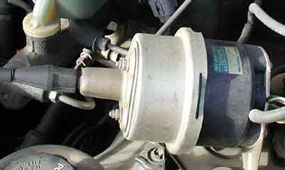
Many cars use actuators powered by engine vacuum to open and close the throttle. These systems use a small, electronically-controlled valve to regulate the vacuum in a diaphragm. This works in a similar way to the brake booster , which provides power to your brake system.
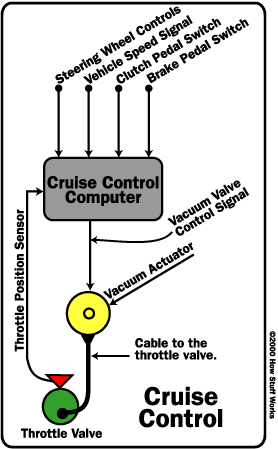
The brain of a cruise control system is a small computer that is normally found under the hood or behind the dashboard. It connects to the throttle control seen in the previous section, as well as several sensors. The diagram below shows the inputs and outputs of a typical cruise control system.
A good cruise control system accelerates aggressively to the desired speed without overshooting, and then maintains that speed with little deviation no matter how much weight is in the car, or how steep the hill you drive up. Controlling the speed of a car is a classic application of control system theory . The cruise control system controls the speed of the car by adjusting the throttle position, so it needs sensors to tell it the speed and throttle position. It also needs to monitor the controls so it can tell what the desired speed is and when to disengage.
The most important input is the speed signal; the cruise control system does a lot with this signal. First, let's start with one of the most basic control systems you could have -- a proportional control .
In a proportional control system, the cruise control adjusts the throttle proportional to the error, the error being the difference between the desired speed and the actual speed. So, if the cruise control is set at 60 mph and the car is going 50 mph, the throttle position will be open quite far. When the car is going 55 mph, the throttle position opening will be only half of what it was before. The result is that the closer the car gets to the desired speed, the slower it accelerates. Also, if you were on a steep enough hill, the car might not accelerate at all.
Most cruise control systems use a control scheme called proportional-integral-derivative control (a.k.a. PID control). Don't worry, you don't need to know any calculus to make it through this explanation -- just remember that:
- The integral of speed is distance.
- The derivative of speed is acceleration.
A PID control system uses these three factors -- proportional, integral and derivative, calculating each individually and adding them to get the throttle position.
We've already discussed the proportional factor. The integral factor is based on the time integral of the vehicle speed error . Translation: the difference between the distance your car actually traveled and the distance it would have traveled if it were going at the desired speed, calculated over a set period of time. This factor helps the car deal with hills, and also helps it settle into the correct speed and stay there. Let's say your car starts to go up a hill and slows down. The proportional control increases the throttle a little, but you may still slow down. After a little while, the integral control will start to increase the throttle, opening it more and more, because the longer the car maintains a speed slower than the desired speed, the larger the distance error gets.
Now let's add in the final factor, the derivative . Remember that the derivative of speed is acceleration. This factor helps the cruise control respond quickly to changes, such as hills. If the car starts to slow down, the cruise control can see this acceleration (slowing down and speeding up are both acceleration) before the speed can actually change much, and respond by increasing the throttle position.
Two companies are developing a more advanced cruise control that can automatically adjust a car's speed to maintain a safe following distance. This new technology, called adaptive cruise control , uses forward-looking radar , installed behind the grill of a vehicle, to detect the speed and distance of the vehicle ahead of it.
Adaptive cruise control is similar to conventional cruise control in that it maintains the vehicle's pre-set speed. However, unlike conventional cruise control, this new system can automatically adjust speed in order to maintain a proper distance between vehicles in the same lane. This is achieved through a radar headway sensor , digital signal processor and longitudinal controller . If the lead vehicle slows down, or if another object is detected, the system sends a signal to the engine or braking system to decelerate. Then, when the road is clear, the system will re-accelerate the vehicle back to the set speed.
The 77-GHz Autocruise radar system made by TRW has a forward-looking range of up to 492 feet (150 meters), and operates at vehicle speeds ranging from 18.6 miles per hour (30 kph) to 111 mph (180 kph). Delphi's 76-GHz system can also detect objects as far away as 492 feet, and operates at speeds as low as 20 mph (32 kph).
Adaptive cruise control is just a preview of the technology being developed by both companies. These systems are being enhanced to include collision warning capabilities that will warn drivers through visual and/or audio signals that a collision is imminent and that braking or evasive steering is needed.
For more information on cruise control, check out the links below.
Cruise Control FAQ
How does cruise control work, how does adaptive cruise control work, will adaptive cruise control stop the vehicle, when would you use cruise control, how useful is cruise control, lots more information, related articles.
- How Car Engines Work
- How Brakes Work
- How Manual Transmissions Work
- How Fuel Injection Systems Work
- How Radar Detectors Work
- Ignition System Quiz
More Great Links
- BMW: Cruise-control-equipped motorcycle
- Cruise Control Block Diagram
- Cruise Control Installers' Instructions
- Cruise Control Service Tips
Please copy/paste the following text to properly cite this HowStuffWorks.com article:
- PRO Courses Guides New Tech Help Pro Expert Videos About wikiHow Pro Upgrade Sign In
- EDIT Edit this Article
- EXPLORE Tech Help Pro About Us Random Article Quizzes Request a New Article Community Dashboard This Or That Game Popular Categories Arts and Entertainment Artwork Books Movies Computers and Electronics Computers Phone Skills Technology Hacks Health Men's Health Mental Health Women's Health Relationships Dating Love Relationship Issues Hobbies and Crafts Crafts Drawing Games Education & Communication Communication Skills Personal Development Studying Personal Care and Style Fashion Hair Care Personal Hygiene Youth Personal Care School Stuff Dating All Categories Arts and Entertainment Finance and Business Home and Garden Relationship Quizzes Cars & Other Vehicles Food and Entertaining Personal Care and Style Sports and Fitness Computers and Electronics Health Pets and Animals Travel Education & Communication Hobbies and Crafts Philosophy and Religion Work World Family Life Holidays and Traditions Relationships Youth
- Browse Articles
- Learn Something New
- Quizzes Hot
- This Or That Game
- Train Your Brain
- Explore More
- Support wikiHow
- About wikiHow
- Log in / Sign up
- Cars & Other Vehicles
- Driving Vehicles
- Efficient Driving
How to Use Cruise Control on a Car
Last Updated: February 20, 2024 Fact Checked
This article was co-authored by Simon Miyerov . Simon Miyerov is the President and Driving Instructor for Drive Rite Academy, a driving academy based out of New York City. Simon has over 8 years of driving instruction experience. His mission is to ensure the safety of everyday drivers and continue to make New York a safer and efficient driving environment. This article has been fact-checked, ensuring the accuracy of any cited facts and confirming the authority of its sources. This article has been viewed 482,477 times.
Many cars come with cruise control systems, a great feature that will automatically keep a car driving at a set speed. This gives your feet a rest, and helps you save gas and avoid speeding tickets. Familiarize yourself with your car's cruise control switches, located on or near the steering wheel. Make sure to use cruise control only in safe conditions, and to stay focused on the road. Once you know how to operate cruise control, you're ready for a comfortable, efficient drive!
Get Car Support Solve Any Problem
We’re sorry we don’t support the car you are looking for. Please enter its make, model, and year below so that we can add support for it.
Operating Cruise Control

- Check your car's operating manual if you are unable to find the cruise control switches.

- Many cars have additional buttons to increase or decrease speed (marked by a +/-) when using cruise control.

- For some car models, cruise control will not operate below a certain speed, such as 40 miles (64 km) per hour.

- To stop cruise control briefly (such as when a car in front of you brakes), just press the brake as you normally would.
- If you are driving a manual, you can also disengage cruise control by pressing the clutch.
- If you are completely done using cruise control, you can press the “OFF” or "ON/OFF" switch.
- If your car has a cruise control “CANCEL” switch, you can also press that to stop it.

- If your car has a +/- button for cruise control, press this when you want to raise or lower your car's speed.
Using Cruise Control Safely and Efficiently

- Using cruise control on busy streets can also be dangerous. Since you yourself are not in complete control of your car, you may be paying less attention. You might brake or react to other cars more slowly than normal, increasing the chance of an accident.

- Wet or snowy roads
- Hilly, steep, or mountainous areas
- Winding roads

Expert Q&A

You Might Also Like

- ↑ Simon Miyerov. Driving Instructor. Expert Interview. 4 December 2019.
- ↑ https://www.youtube.com/watch?v=jKtBSFoAYlg
- ↑ http://www.thecarexpert.co.uk/cruise-control/
About This Article

If you want to use cruise control on your car, make sure you're on the open road, such as a freeway or highway. Additionally, avoid using cruise control in rainy or snowy conditions, or if you're driving through a city, since you'll need to change speed and turn regularly. When you're ready to switch to cruise control, press the "Set" switch, which is usually found on the steering column or on the wheel, when your car reaches the desired speed. To stop cruise control, press on the brake or push the clutch if you're driving a manual car. To learn when to avoid using cruise control and how it can help you save on fuel, read on! Did this summary help you? Yes No
- Send fan mail to authors
Reader Success Stories
Joseph Adizero
Dec 17, 2020
Did this article help you?

Suraj Sinha
Jun 17, 2016
Ashish Vohra
Oct 17, 2017
Jul 26, 2017
Alejandro Martinez
Jul 25, 2016

Featured Articles

Trending Articles

Watch Articles

- Terms of Use
- Privacy Policy
- Do Not Sell or Share My Info
- Not Selling Info
wikiHow Tech Help Pro:
Level up your tech skills and stay ahead of the curve

We're sorry for any inconvenience, but the site is currently unavailable.
Lorraine Explains: A breathalyzer at every traffic stop?
Ev review: 2024 genesis gv60 performance real-world range test, fisker files for creditor protection in austria, may close u.s. headquarters, quebec ford fans pull off record 1,889-mustang convoy, suv review: 2024 subaru outback, what is cruise control a comprehensive guide.
When the system is set, cruise control will maintain a steady speed for your vehicle
You can save this article by registering for free here . Or sign-in if you have an account.
Article content
Your vehicle’s cruise control system unlocks numerous benefits at the touch of a button — but according to web search data, drivers still have plenty of questions about what it is, what it does, and how it works.
What is Cruise Control? A Comprehensive Guide Back to video
Below, we’ll answer some of the most popular Internet search questions about cruise control, so you can make the best use of this important system.
What is Cruise Control?
With cruise control, your vehicle will maintain a steady speed when the system is set.
What is adaptive cruise control?
With adaptive cruise control, the vehicle will also automatically slow down and speed up to maintain a safe position in traffic.
How does cruise control work?
Cruise control work with a manual transmission just the same way it does with an automatic. Drivers set their cruising speed with a button press, and the system works the throttle automatically to maintain the desired cruising speed as evenly as possible. In some vehicles with a manual transmission, pressing the clutch pedal to shift gears turns the cruise control off, requiring an additional button press to reengage it after a gear change.
In other cars with a manual transmission, pressing the clutch pedal simply pauses the cruise control system a moment, allowing drivers to complete their gearshift. When they’ve released the clutch, the cruise control picks up where it left off — no additional button press required.
Is cruise control more fuel efficient?
Yes. Increasing your vehicle’s speed uses fuel. While cruising, even a highly competent driver who isn’t using cruise control will tend to slow down and speed up in a repeated cycle, possibly several times per minute. Though fluctuations in speed may be slight, they do cause your engine to use more fuel than required. Point is, the more time you spend at a steady speed, the less fuel your engine needs.
For most drivers, using cruise control on the highway at 80 km/h can reduce fuel consumption by about 20 per cent. For drivers who find difficulty in maintaining a steady speed and frequently experience big fluctuations, using cruise control can cut fuel use by over 40 per cent.
Depending on what you drive and how fast you drive it, using cruise control could save you between $4 and $20 per hour — based on information from Natural Resources Canada that shows most drivers who don’t use cruise control on the highway will tend to experience a 10 km/h speed fluctuation about three times per minute.
Drivers who have the most difficulty managing their cruising speed could be using 60 per cent more fuel than they need to.
Is cruise control bad for your transmission?
No. Your vehicle’s engine, transmission and other components are designed to work hand-in-hand with its cruise control system and are extensively tested and integrated with one another for trouble-free performance.
Using cruise control also reduces wear and tear on both your engine and transmission by running things more smoothly and steadily, and reducing workload on both components.
Can you add cruise control to a car?
Yes. Depending on the year, make and model, cruise control may be available for add-on or retrofit. Professional installation is recommended, and you’ll want to talk to a professional about the specific availability of parts and integration for your vehicle.
In many cases with modern cars, it’s generally easier and more cost effective to just opt for a unit equipped with cruise control from the factory. Cruise control is widely available as standard equipment on most modern vehicles.
Can cruise control get stuck?
Yes , but it’s extremely rare. Older cable-based cruise control systems seem more prone to this rare problem, in which the cable can slip or bind, making the throttle stick into position. More modern vehicles with electronic throttle and monitoring systems make this problem even less likely.
If the cruise control on your car fails to disengage when you want to slow down, slip the vehicle into neutral to disconnect drive power from the wheels, pull over, and address the situation.
However, chances are, you’ll never experience this problem.
When should cruise control be used?
Any time you’re trying to drive at a constant speed. Whether around town at 60 km/h, in a residential area at 40 km/h, or out on the highway at 105 km/h, switching the cruise control on makes for a smoother and more fuel efficient drive that’s easier on your engine and transmission. it can also help you do your part to maintain the steady and efficient flow of traffic.
Most cruise control systems can be engaged at speeds above 30 km/h.
When should cruise control not be used?
Any time you can’t safely drive at a steady speed. If the road surface is snowy, icy, slushy or very wet, you’ll want to think twice about switching your cruise control on.
In older cars, having your cruise control engaged on a wet or icy road could allow the vehicle to accelerate or experience wheelspin when driven wheels encounter a low-traction surface. Here, the cruise control system maintains throttle pressure, even in situations where it should be released instead. This could lead to a loss of control.
In more modern vehicles, electronic monitoring is used to automatically disengage cruise control when one of the following happens:
- one or more wheels slip
- one or more wheels leave the surface of the road after a major bump or dip
- the wipers are set to the maximum speed setting in heavy rain
Use your judgement. Safely navigating certain slippery or dangerous driving conditions requires careful manual control of your vehicle’s throttle, and in these situations, you’re best to leave the cruise control off.
What causes cruise control to kick off?
If the cruise control in your vehicle suddenly kicks off, a few things may be to blame.
Sometimes, cruise control disengages automatically when the vehicle’s automatic wipers detect heavy rainfall, or when a wheel spins or (briefly) leaves the surface of the road after a big bump or dip. In other situations, there may be a problem with one or more sensors or switches, including the brake pedal switch, throttle position sensor, or one or more wheel speed sensors.
Your modern cruise control system relies on various sensors and switches to do its job properly. As a failsafe, any problem with these sensors can cause the cruise control system to go offline. If you notice this happening regularly, have your vehicle diagnosed by a professional.
Will the cruise control work with an ABS light on?
Probably not. Your car’s Antilock Braking System works hand-in-hand with your cruise control system, and any fault with the ABS system will typically take your cruise control offline until it’s fixed.
An ABS warning light in your instrument cluster can indicate one of several major problems or malfunctions, so be sure to have a professional investigate as quickly as possible.
Will cruise control apply the brakes?
No, but adaptive cruise control will. Standard cruise control (simply called cruise control) holds your vehicle’s speed as constant as possible once set. More advanced adaptive cruise control systems use camera or radar-based sensing to determine the traffic situation in front of your vehicle, and can automatically apply the brakes to maintain a pre-set following distance.
With cruise control, drivers need to brake to slow down as they close in on a slower vehicle in traffic. With adaptive cruise control, the system makes these braking inputs automatically, and the vehicle speeds back up to its pre-set cruising speed once traffic clears.
Before you buy, be sure to determine which type of cruise control system is fitted to the car you’re considering.
What is Super Cruise?
Super Cruise is a next-level driver assistance feature available on certain GM vehicles.
With Super Cruise, the vehicle uses special GPS hardware and sensors to accurately compare its position to a 3D map of pre-qualified highways .
On these pre-qualified highways, Super Cruise allows drivers to go hands-free for extended periods as the vehicle automatically maintains its cruising speed, adjusts that speed for changing traffic conditions, and even precisely follows the curves in the road. It can even make hands-free lane changes.
Super Cruise is not an autonomous system, and in order for it to work, drivers need to keep their eyes on the road — there’s even a camera that monitors the position of the driver’s eyes to make sure they’re focused on the road ahead.
- Evolutionary: The Mercedes-Benz G-Wagen has never strayed far from its roots
- How to jump-start a car—a step-by-step guide
- Testing Mitsubishi’s AWD systems and Snow mode on ice
- 12 things to know about the 2025 Ram 1500 Ramcharger REx
- Ministry of Interior Affairs: How the Range Rover Sport SV's seats vibrate to your music
Justin Pritchard
Justin Pritchard is an experienced motoring expert whose work is read and watched by Canadians across the country on a weekly basis. Starting his career at Auto123.com back in 2005 (while finishing his final year of studies at Laurentian University in Sudbury, Ontario), Justin quickly applied his passion for writing, presenting, and photography, working under some of the most recognized editors in the Canadian motoring scene.
Justin has written one of the largest collections of used car buyer guides on the internet, and his TV program, AutoPilot, has aired over 600 episodes across 16 seasons. Presently, AutoPilot is the only English-language motoring program on Canadian cable TV, though he's lent his informative style and easy-to-identify voice to video features for Youtube, Driving.ca, Autotrader.ca, Motoring TV, and elsewhere. With 4 years as co-chair of the Canadian Car of the Year Awards (CCOTY) program, a passion for vehicle testing shines though in all of his work.
A passion for photography from a young age makes Justin as comfortable behind the camera as in front of it, and capturing motoring memories from the scenery of beautiful Northern Ontario is a priority in much of his work. The particularly harsh winter climate in this part of Canada makes Justin a particular expert on winter driving, winter tires, and extreme-weather safety.
Major awards won by the author
Contact info.
Youtube: @JustinPritchard
Postmedia is committed to maintaining a lively but civil forum for discussion. Please keep comments relevant and respectful. Comments may take up to an hour to appear on the site. You will receive an email if there is a reply to your comment, an update to a thread you follow or if a user you follow comments. Visit our Community Guidelines for more information.
Affordable EVs
Small trucks
Popular Crossover SUVs
Practical 3-row SUVs
Minivans for the whole family
Compact Cars
Luxury SUVs
Affordable AWD SUVs
All things automotive: breaking news, reviews and more. Wednesdays and Saturdays.
- There was an error, please provide a valid email address.
A welcome email is on its way. If you don't see it, please check your junk folder.
The next issue of Driving.ca's Blind-Spot Monitor will soon be in your inbox.
We encountered an issue signing you up. Please try again
Best retrofit Apple CarPlay and Android Auto units
You don't need to buy a new car to add Apple CarPlay or Android Auto.
5 Essential car accessories every driver should buy
There's lots of aftermarket gear out there, but get these add-ons first—they'll make your daily drive more comfortable and safe
The top 5 best motorcycle accessories we've tested
After 40 years of testing motorcycles, these are the five pieces of gear David Booth can’t and won’t live without
Tools you'll need for DIY tire swaps
Changing tires twice a year, it won’t take many seasonal swaps to pay for your investment
Top car organizers to declutter the cabin
Discover some of the top-rated car organizers that will help declutter the car and arrange belongings for a hassle free drive
This website uses cookies to personalize your content (including ads), and allows us to analyze our traffic. Read more about cookies here . By continuing to use our site, you agree to our Terms of Service and Privacy Policy .
Edit your picks to remove vehicles if you want to add different ones.
You can only add up to 5 vehicles to your picks.
Looks like you've reached your saved article limit!
You can manage your saved articles in your account and clicking the X located at the bottom right of the article.
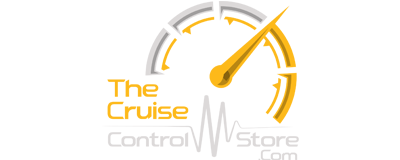
- my account Sign in Register
Instruction Manuals
Everything ordered from TheCruiseControlStore.com is backed with our expert technical assistance and a world class warranty. If your having trouble locating someone to install your new cruise control, give us a call. We have affiliates across the country that can help.
Chrysler/Jeep/Mercedes
- 2006-2012 Caliber 250-9001
- 2006-2012 Compass 250-9001
- 2006-2012 Patriot 250-9001
- 2007-2012 Wrangler 250-9001
- 2008-2012 Liberty 250-9001
- 2008-2012 Caravan 250-9001
- 2008-2012 Journey 250-9001
- 2008-2012 Nitro 250-9001
- 2009-2011 Ram Truck 250-9001
- 2007-2012 Dakota 250-9008
- 2007-2009 Ram 2500-3500 250-9008
- 2005-2006 Ram Truck w/diesel 250-9008
- 2012 Ram 1500 250-9623
- 2007-2013 Sprinter Van 250-9625
- 2013 Dart 250-9630
- 2014-2021Dodge Promaster 250-9642
- Dodge Promaster City 250-9639
- Sprinter 2019+ 250-9650
- Metris 2018+ 250-9662
- 2022+ Dodge Promaster 250-9648
- 2019+ Dodge Ram New Body 250-9652
- 2008-2011 Ford Focus 250-1840
- 2008-2010 E250-350 6 w/ 6 pin Gas Pedal 250-1847
- 2009-2013 E-150 250-1847
- 2009-2013 F-150 250-1847
- 2008-2010 F250-350 w/ 6 pin Gas Pedal 250-1847
- 2006-2008 F-150 250-9507
- 2011-2012 F250-450 w/ 6 pin Gas Pedal 250-9602
- 2010-2013 Ford Transit 250-9605
- 2011-2013 Fiesta 250-9610
- 2011+ E25-350 w/ 6 pin Gas Pedal 250-9611
- 2012-2013 Focus 250-9612
- 2008-2011 E250-350 w/ 8 pin Gas Pedal 250-9501
- 2008-2011 F250-350 w/ 8 pin Gas Pedal 250-9501
- 2014 Ford Transit 250-9612
- 2014+ Transit Connect 2.5L 250-9635
- 2014 Transit Van 250-9636
- 2017+ Ford F-250 350 450 250-9510
- Ford F-150 2015+ 250-9545
- 2019+ Ford Transit Connect 2.0&2.5 250-9661
- 2020+ Ford Transit Van 250-9666
- 2021+ Ford Econoline Van 250-9666
- 2017+ Ford F-250 F-350 F-450 250-9666
- 2017+ Ford F-250 F-350 F-450 Cab & Chassis 250-1837
- 2022+ Ford Maverick 250-9661
- 2019-2023 Ford Ranger 250-9661
- 2021+ Ford F-150 250-9668
- 2004-2005 Chevy Aveo 250-1753
- 2004-2005 Pontiac Wave 250-1753
- 2005-2008 Pontiac Vibe 250-1768
- 2005-2008 Pontiac Vibe w/manual transmission 250-1771
- 2005-2010 Saturn Ion 250-1774
- 2005-2006 Pontiac Torrent 250-1774
- 2005-2006 Chevy Equinox 250-1774
- 2004-2011 Chevy Colorado 250-1774
- 2005-2011 GMC Canyon 250-1774
- 2007-2010 Pontiac G5 250-1775
- 2006-2010 Pontiac G6 250-1775
- 2006-2010 Pontiac Pursuit 250-1775
- 2006-2010 Pontiac Solstice 250-1775
- 2005-2009 Chevy Cobalt 250-1775
- 2006-2010 Chevy Malibu 250-1775
- 2006-2010 Chevy HHR 250-1775
- 2009 Pontiac Vibe 250-1836
- 2006-2011 Aveo 250-9000
- 2008-2011 G3 250-9000
- 2007-2009 Equinox 250-9003
- 2008-2009 Express/Savana Van 250-9003
- 2007-2009 Torrent 250-9003
- 2011 Cruze 250-9003
- 2007-2010 Montana SV6 250-9004
- 2007-2011 Uplander 250-9004
- 2010 Cobalt 250-9600
- 2013-2018 Express/Savana Van 250-9 608
- 2011-2013 Cruze 250-9613
- 2009-2017 Silverado/Sierra 250-9617
- 2012-2019 Sonic 250-9618
- 2012-2019 Spark 250-9618
- 2007-2008 Silverado/Sierra 250-1848
- 2013+ Trax 250-9640
- 2016.5+ Chevy Cruze auto/manual 250-9543
- 2019 Silverado / Sierra 250-9646
- 2023+ Chevy Express/GMC Savana 250-9647
- 2023+ Push-to-Start Colorado 250-9651
- 2015-2023 Chevy Colorado 250-9613
- 2022+ Sierra / Silverado 1500 Push-to-Start 250-9624
- 2024+ Sierra / Silverado 2500-3500 250-9624
- 2007-2011 Honda Civic w/ABS 250-1855
- 2007-2008 Honda Fit 250-1867
- 2009-2012 Fit 250-1877
- 2009-2013 Insight 250-1877
- 2012 Civic 250-9620
- 2007-2011 Hyundai Accent 250-1799
- 2011-2013 Hyunda Genesis 250-1859
- 2010-2013 Tucson 250-9627
- 2010-2013 Accent 250-9628
- 2010-2013 Elantra 250-9628
- 250-1862 Accent / Elantra
- 2004-2005 Kia Rio 250-1766
- 2006-2011 Kia Rio 250-1799
- 2007-2011 Kia Rondo 250-1859
- 2010-2011 Kia Sedona 250-1859
- 2005-2009 Sedona 250-9005
- 2007-2010 Sorento 250-9005
- 2010-2013 Forte 250-9626
- 2007-2013 Optima 250-9627
- 2014 Forte 250-9628
- 2012-2013 Rio 250-9628
- 2012-2013 Soul 250-9631
- 250-1862 Forte / Rio
- 2007-2009 Mazda 3 250-9009
- 2010-2013 Mazda 2 250-9601
- 2006-2013 Miata 250-9607
- 2010 Mazda 3 250-9610
- 2011-2013 Mazda 3 250-9622
- 2010 Mazda 6 250-9503
- 2014 Mazda 3 250-9634
Miscellaneous Manuals
- The Cruise Control Store Warranty Card
- 250-1223 Universal Cruise kit
- 250-1483 RF Cruise switch
- 250-3592 & 250-3593
- VSS & Tach Info 1986-1995
- VSS & Tach Info 1996-2009
- 250-1223 Troubleshooting
- 2007-2011 Raider 250-9008
- 2014+Mirage 250-9633
- 2017+ Mirage 250-1885
- 2007-2010 Nissan Cube w/ABS 250-1855
- 2007-2012 Xterra 250-1856
- 2013 Frontier 250-1856
- 2007-2013 Sentra 250-9604
- 2012-2013 NV 250-9606
- 2013-2014 NV200
- 2013 Altima 250-9629
- 2007-2012 Frontier 250-9658
- 2008-2013 Titan 250-9659
- 2007-2013 Versa 250-9504
- 2014+ Nissan Versa 250-9508
- 2013-2015 Nissan Rogue 250-9629
- 2019+ Qashqai 250-9663
- 2012-2017 Impreza 250-9632
- 2006-2009 Reno 250-9000
- 2006-2009 Forenza 250-9000
- 2007-2009 SX4 250-9006
- 2010-2013 SX4 250-9006
- 2006-2011 FJ Cruiser 250-1732
- 2005-2009 Sienna 250-1732
- 2007-2012 Scion TC 250-1732
- 2007-2011 Scion XA 250-1732
- 2007-2011 Scion XB 250-1732
- 2004-2005 Scion Xa & Xb 250-1755
- 2005-2008 Corolla/Matrix 250-1768
- 2005-2008 Corolla/Matrix w/manual transmission 250-1771
- 2009-2013 Corolla/Matrix 250-1836
- 2006-2013 Prius 250-1836
- 2005-2008 Tacoma 250-1836
- 2005-2011 Tundra 250-1836
- 2007-2013 Yaris 250-1836
- 2009-2013 Tacoma 250-1836
- 2012-2013 Prius C 250-1836
- 2006-2007 Yaris 250-1873
- 2012-2013 IQ 250-9621
- 2011-2013 Jetta 250-9615 250-9616
© 2024 The Cruise Control Store Powered by BigCommerce All rights reserved. | Sitemap
Toyota Owners
Toyota Español
Welcome, here you'll have access to your Support Dashboard where you can see your support requests status or create a new request.
How do I operate the cruise control in my vehicle?
To use cruise control, turn it on first by pressing the button on the end of the control stalk behind the lower right side of the steering wheel. the green cruise control icon will appear in the instrument display to show the system is ready. the... sep 24, 2022 • knowledge, new section, only answer.
To use Cruise Control, turn it on first by pressing the button on the end of the control stalk behind the lower right side of the steering wheel. The green cruise control icon will appear in the instrument display to show the system is ready.
Then accelerate to the speed you want, and press the stalk down to set it. The SET indicator will appear underneath the CRUISE CONTROL icon to let you know you can take your foot off the accelerator.
If you need to increase your speed, lift and hold the stalk up until you reach the speed you want, and then release it.
To reduce the set speed, push the stalk down and hold it to slow down to your target speed, and then release it.
To temporarily suspend cruise control, pull the stalk towards you, or tap the brakes.
To resume the set speed, push the lever up briefly.
See the Owner's Manual for details and system limitations.
Please click here to view a video.
Disclaimer: Not all features are available on all vehicles and model grades. Please see your Owner's Manual for further details and important safety information.
Related Articles
- How do I operate the adaptive cruise control in my vehicle?
- How do I operate the dual zone automatic climate control in my vehicle?
- How do I operate the audio steering wheel controls in my vehicle?
Not finding your answer?

Cruise Control

Cruise Control (Some Models)


Can You Use Cruise Control With Manual Transmission?
Cruise control, even though it has been around for a while, has been one of the best features of a car especially if you are looking at the safety of the vehicle. But while cruise control tends to be a standard feature in cars with automatic transmission, you might wonder if manual cars have it. So, can you cruise control with a manual transmission?
You can cruise control with a manual transmission. It doesn’t work half as well as it does with automatic transmissions as it still regulates the car’s speed when you are cruising. But the system tends to disengage the moment you slow down or when you press the clutch.
In that regard, while cruise control does indeed work with cars with manual transmissions, you shouldn’t expect it to work perfectly at all or even close to how it works on cars with automatic transmissions. Still, having cruise control on a manual car can still be something to be happy about especially when it comes to your overall safety.
Is cruise control available on cars with manual transmissions?
When you look at how cruise control works and how manual transmission cars are basically a thing of the past, you would probably think that they are not compatible with one another. And there is a good reason for that especially when you consider that cruise control works really great on cars with automatic transmissions and how it seemingly should only work on them.
However, what you need to know is that cruise control is indeed available on cars with manual transmissions. Yes, you read that right. Even though it might seem like cruise control and manual transmission don’t seem to go well together, this is still a feature that is very much present in cars with manual transmissions.
The reason why cruise control is still available on manual transmission cars is, of course, for safety and for convenience. You can never really deny the fact that cruise control is very useful when it comes to cruising on an open road especially during long drives as it basically allows you to fix your speed at certain levels. And when applied on a manual transmission car, it becomes quite useful as well especially when you consider how it can be exhausting to keep your car on a steady speed level when you are driving a stick shift car.
Of course, because modern cars now come with electronic speed signals and electronic accelerator signals, it really isn’t difficult to integrate cruise control into cars that come with manual transmissions. Even modern motorbikes also have cruise control nowadays given how useful the feature is for any kind of vehicle.
How does adaptive cruise control work with a manual transmission?
While cruise control may be available on cars with manual transmissions, don’t expect it to work as well as it does on a car with an automatic transmission. In some cases, you would even say that cruise control works only half as well as it does on stick shift cars than it does with an automatic car.
For starters, when you engage the cruise control function on a car with a manual transmission, it will work in a similar manner as it does on a car with an automatic transmission. However, the moment you step on the clutch or when you slow down or come to a full stop, the system will automatically disengage unlike how it stays turned on in a car that runs on an automatic transmission system.
As such, when you have to switch gears, you need to re-engage the cruise control function again. However, this doesn’t seem to be much of a big deal for manual transmission drivers because of how switching gears means you are actually slowing down or speeding up. That naturally means that you actually don’t have to use cruise control.
Meanwhile, when the RPM gets to levels that are too low or too high, the cruise control function automatically disengages as well. However, it won’t disengage if it detects traffic that is slower than you as long as the difference in speeds isn’t that too big. But when the speed difference is so big that you need to downshift, the system will automatically disengage.
Is low-speed follow available on a manual transmission?
No, low-speed follow is not a feature that is available on cars with manual transmission. Low-speed follow may be great for cars running on automatic transmissions but it is close to impossible to integrate it with stick shift cars because of how it will require you to shift your gears a lot when you are driving a car with a manual transmission.
Can you put cruise control in a car that doesn’t have it?
Even if you have an older car that doesn’t have cruise control, you shouldn’t worry because you can still have it added to your car. Yes, that is right. You can have an aftermarket cruise control added to your car regardless of whether it may be manual or automatic if it originally didn’t come with cruise control. And there are plenty of reasons why you should have cruise control in your car.
Long rides will end up becoming more comfortable if you have cruise control. Of course, because of the consistent speeds your car will be running on, it will end up having better mileage. And when you are in the middle of long drives, you will less likely end up getting fatigued when you have cruise control engaged.
Cruise control kit for manual transmission
In case you want cruise control to be added to your car, you can simply buy a cruise control kit and have it installed in your car. This cruise control kit from Rostra is a good choice because of how comparatively affordable it is and how it can be installed in manual transmission cars. However, you would need to buy a separate clutch switch for it to be installed in a car with a manual transmission.
https://www.motorbiscuit.com/does-adaptive-cruise-control-work-with-a-manual-transmission/
https://www.hallmazdamilwaukee.com/blog/do-manual-vehicles-have-adaptive-cruise-control/
YourMotorFixResearcher
Owner of YourMotorFix.com
Learn More...
Should All Your Car Tires Have The Same Pressure?
The tire pressure for cars varies depending on the size and weight of the vehicle, the size of the wheels fitted to the vehicle, and in some instances, the type of tire fitted on the rim. While all...
What To Consider Before Taking New Car On A Road Trip
You just bought a brand-new car and you are excited to take it on a spin. Naturally, you would want to drive it on the road to test out how well it holds up to your standards. But how far should you...



Do Manual Cars Have Cruise Control? [Full Guide!]
Cruise control is a great feature available on most cars. It is perfect for long distances and stretches of road that are reasonably empty and don’t have a lot of twists and turns. But, today, I will explain if manual cars have cruise control.
Generally speaking, most modern manual cars come with cruise control. However, this feature functions slightly differently on a manual car than on an automatic car. Cruise control on an automatic car will change gears, whereas you need to change gears on a manual car when in cruise control.
Cruise control is reasonably straightforward to use. However, there are a few key things to know about how it works. This article will be a complete guide on everything there is to know about cruise control on manual cars.
How Cruise Control Works on Manual Cars
Many people never use cruise control on their cars even though many vehicles have advanced cruise control features. It’s necessary to change gears often on a manual car, which makes understanding how cruise control works on manual cars. So, here’s a summary and detailed explanation of how cruise control works on manual cars.
Overall, you set the cruise control speed and enable and disable it using the controls on the steering wheel or a lever attached to the steering wheel. It will automatically keep your car at the speed you set. But, you need to manually change gears to stop the engine from stalling.
There are many different versions of cruise control, and they differ based on the make, model, and year of the car. Some will:
- Slow down your car automatically when it senses a vehicle in front of you
- Turn off the cruise control when you press on the brakes
- Turn off the cruise control when your speed drops below a certain speed – usually around 20 to 30 mph (32 to 48 km/h)
- Disable the cruise control when you press the clutch in
A manual car with cruise control that can be enabled at any speed is often called ‘all-range.’ It can be set at any speed and won’t be disabled if your speed drops too low. This is ideally suited to stop-and-go-type situations, such as when you are in heavy traffic. This feature is more common on newer cars – made in 2017 or later.
On older manual cars with cruise control, the cruise control is disabled when you press the clutch. Whereas, on newer car models, you can change gears any time you want. However, some limit how long you can press the clutch in. For example, it will disable the cruise control if you press the clutch for more than 2 seconds.
Modern cars from about 2017, often have an inbuilt feature that will disable the cruise control if the engine gets close to stalling. And many car models will notify you to change gears when it detects the revs are too low for the speed and gear.
What happens if a car in front of you is going slow
Setting the cruise control to just under the speed limit is common. However, cars in front of you can often slow down to take an exit or drive slower than expected.
Many modern manual cars with cruise control have sensors that detect when there is a car in front of you and will automatically slow down. Such as Toyota cars, which have what they call ‘ Dynamic Radar Cruise Control .’ This feature is now standard on most new car makes and models.
However, if a manual car doesn’t have this feature, you need to press on the brakes to slow down. Here’s what happens if you brake when cruise control is on.
Can You Brake on Cruise Control?

Cruise control is designed to keep your car at a constant speed, but all too often, something will happen that will require you to brake, such as a sharp turn or a car pulling out in front of you. So, this is what happens if you brake while the cruise control is on, and if it’s possible.
You can brake on cruise control. Once you have finished braking, the cruise control will accelerate, returning to the set cruise control speed. However, if it’s a manual car and you decelerate, you typically need to shift down a gear or two to stop the engine from stalling.
A car can struggle to accelerate and stall if you decelerate too much. For example, if you are in 5th gear and brake all the way down to 10 mph (16 km/h), the car won’t be able to accelerate in 5th gear at this slower speed.
Therefore, you will need to change down to 2nd or 3rd first, and then change up gears as the cruise control accelerates for you manually.
But, in general, it’s easiest to take it out of cruise control when you need to brake a lot. Then, once you’re in a place where you don’t need to brake as often, you can put it back into cruise control.
Does Cruise Control Change Gears
While cruise control is active, the acceleration and deceleration are controlled by an onboard computer. However, on manual transmission cars, there is no way for the car to change gears itself. So, here’s whether cruise control can change gears on manual and automatic cars.
Typically, cruise control does not change gears on a manual transmission vehicle. Thus, if you need to brake or you enter a very steep hill, you will need to change down gears on a manual transmission. However, the cruise control feature on most automatic vehicles is designed to change gears too.
When you are on a steep hill in the wrong gear, the car can stall, and you will need to brake immediately. Therefore, you should change down gears when your car is struggling to go up a hill.
By comparison, you don’t need to change gears when in cruise control on an automatic car. The one exception is on very steep hills where the onboard computer can’t detect that it’s a very steep hill. In that case, you may need to put it into manual 1st or 2nd to have enough acceleration to make it up a hill.
Similar Posts
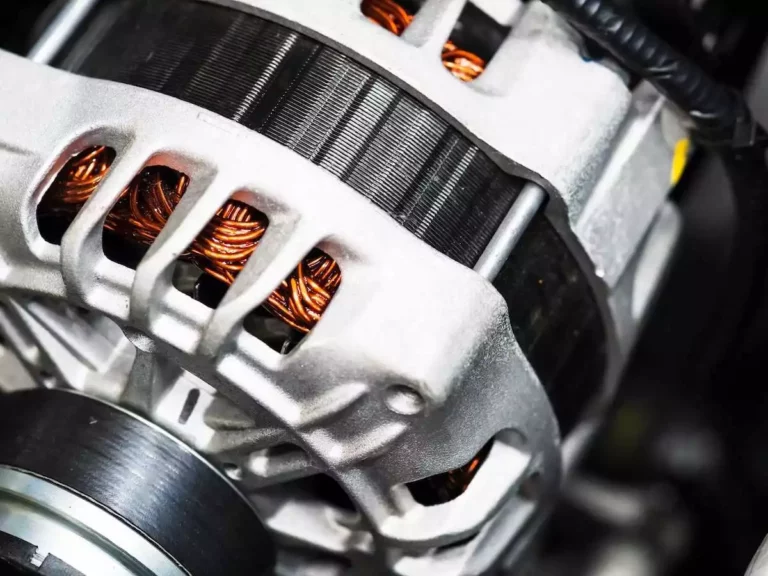
How Long Does It Take an Alternator to Charge a Battery?
All cars featuring an internal combustion engine have a charging system consisting of the alternator, regulator,…
![cruise control manual Car Won’t Start or Make Noise? [Here’s What to Do!]](https://vehicleuniversity.com/wp-content/uploads/2023/01/cropped-view-of-african-american-businessman-in-su-2021-09-01-14-45-07-utc-768x576.webp)
Car Won’t Start or Make Noise? [Here’s What to Do!]
Trying to get your day started just to realize that your car is refusing to start…
![cruise control manual Why Are Cars Called Whips? [Here’s the Truth!]](https://vehicleuniversity.com/wp-content/uploads/2023/01/car-drifting-2021-08-29-13-38-47-utc-768x576.webp)
Why Are Cars Called Whips? [Here’s the Truth!]
A “whip” is a strange word to use for a car. However, it’s common to hear…
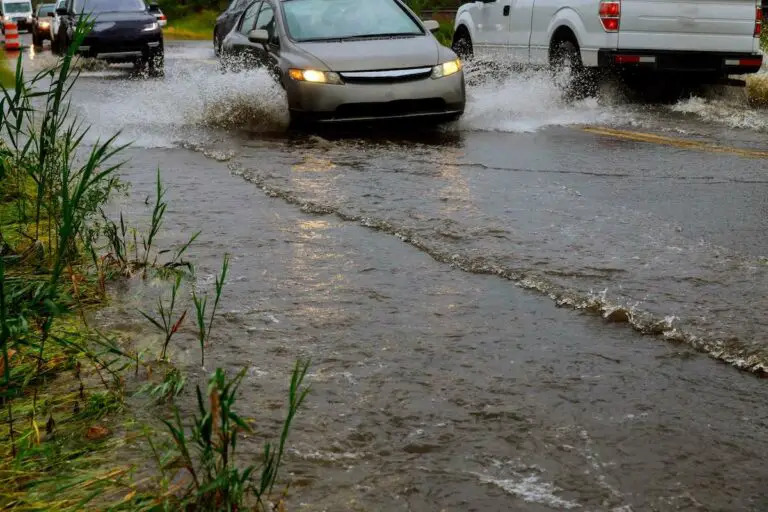
Car Won’t Start After Driving Through Water? Here’s Why!
Driving a car through water can result in your car not starting or stalling while you…
![cruise control manual Can You Open a Car Door Underwater? [Here’s What to Know!]](https://vehicleuniversity.com/wp-content/uploads/2023/01/Depositphotos_52375185_XL-768x512.jpeg)
Can You Open a Car Door Underwater? [Here’s What to Know!]
With the advent of more safety features and driver’s aids, cars are undoubtedly safer. However, knowing…
![cruise control manual What Kind of Acid is in a Car Battery? [With Explanation!]](https://vehicleuniversity.com/wp-content/uploads/2023/01/daily-car-check-check-out-the-distilled-car-batter-2021-08-26-17-53-37-utc-768x576.webp)
What Kind of Acid is in a Car Battery? [With Explanation!]
A car battery is used to start a vehicle and power the electronics. Routine maintenance must…
Leave a Reply Cancel reply
You must be logged in to post a comment.

Can You Use Cruise Control In A Manual Transmission Car?
- May 23, 2023

If you’re a fan of manual transmission cars, the question of whether or not you can use cruise control may have crossed your mind. The good news is that it is possible to use cruise control in a manual transmission car. Cruise control is a handy feature that has been around for decades and was invented to make long drives more comfortable for drivers. It allows drivers to maintain a constant speed without having to keep their foot on the gas pedal all the time. In this blog, we will discuss how cruise control works in manual cars, the different types of cruise control, and how to use it with your manual car. So, buckle up, and let’s get started!
Table of Contents
What Is Cruise Control? And When Was Cruise Control Invented?
Cruise control is a car feature that maintains a constant speed without using the accelerator pedal. Although patented in 1948, it was not widely available until the 1980s. Inventor Ralph Teetor, who was blind, created it to prevent motion sickness. Almost all cars have cruise control now, with newer models featuring adaptive systems.
How Does Cruise Control Work In Manual Cars?
Cruise control in manual cars operates similarly to automatic cars, allowing the driver to set and maintain a desired speed. However, the system may require manual adjustments when driving on hills or declines. When the car slows down, it will automatically downshift to maintain speed.
Types Of Cruise Control
1. adaptive cruise control.
Adaptive Cruise Control (ACC) is one of the most advanced forms of cruise control that is available in modern cars. The system uses sensors to detect the speed and distance of other vehicles on the road. This ensures that you maintain a safe distance from other vehicles and avoid collisions. ACC adjusts the car’s speed and braking automatically, so you don’t need to worry about constantly adjusting your throttle or brake pedal. It provides smooth acceleration and deceleration, ensuring a comfortable ride for everyone in the car. ACC is typically found in newer cars but can also be retrofitted into older cars as an aftermarket upgrade. It is a standard feature in many SUVs and luxury cars from brands such as Ford and Chrysler.
How does adaptive cruise control work with a manual transmission?
Adaptive cruise control relies on radar or camera sensors to detect the distance between your car and the one in front, automatically adjusting your speed. However, if you have a manual transmission car, you’ll need to disengage the clutch and shift gears yourself. This requires extra attention, so exercise caution when using it and only in ideal conditions.
2. Semi-autonomous Cruise Control
Semi-Autonomous Cruise Control is an electronic system that utilizes sensors to detect both the speed and distance of other vehicles around you. By monitoring these factors, it offers drivers an effortless way to maintain a safe following distance while cruising at a constant speed. This feature can be found as standard on many modern-day suvs like Ford and Chrysler or as an optional add-on for regular cruise control systems. The adaptive cruise control feature is available on some manual transmissions, but it may require additional sensors or technology in older cars. As with any driving aid, always check your car’s manual or consult with professionals before attempting to use it under traffic conditions.
3. A Speed Limiter
A speed limiter is an electronic system that comes in quite handy when you want to keep your vehicle from exceeding the pre-set limit of its cruising speed. This feature is particularly useful if you want to avoid speeding tickets or maintain a constant speed on long drives. A speed limiter is a type of cruise control system that allows you to set a maximum speed for your manual transmission vehicle without having to worry about accidentally going over the desired limit. It should be noted that while using this feature, it’s important to stay alert and follow safe driving practices such as keeping a safe distance from other vehicles on the road and adjusting your throttle, accelerator, and clutch pedals correctly. A Speed Limiter is not just available in modern cars but also in older ones like Ford or Chrysler suvs and manuals as well.
How To Use Cruise Control With A Manual Car
It’s important to note that while most newer cars have standard cruise control, some models come with more advanced features like adaptive cruise control systems that allow you to maintain a safe distance from other vehicles even in heavy traffic conditions. So whether you’re driving an automatic or manual transmission car, make sure you know how your car’s cruise control works before hitting the freeway for those long drives.
Locate The Cruise Control Button
When locating the cruise control button in a manual transmission car, identifying it is crucial. This small yet handy feature is usually found on the steering wheel or dashboard and resembles a speedometer with an arrow pointing towards it. To activate cruise control after locating this button, press it once. Following this step, you can increase your car’s speed through smooth acceleration with aid from the accelerator pedal and set your desired cruising speed by releasing it. The electronic system of your vehicle takes over and maintains this constant speed until you turn off the cruise control or apply brakes.
Reach Desired Highway Speed
To use cruise control in a manual vehicle, it’s important to reach your desired highway speed first. Begin by engaging the cruise control feature either through a button or lever located on your steering wheel. With that done, release your foot from the accelerator pedal and allow your car to maintain a constant speed with the assistance of sensors and other electronic systems. If you need to slow down or stop abruptly due to traffic conditions, simply disengage the standard feature by pressing either the brake or clutch pedal. By utilizing this handy feature on long drives, you can save fuel while cruising at a smooth acceleration and safe distance from other cars on the freeway.
Turn On Cruise Control
When turning on the cruise control feature in a manual transmission vehicle, ensure that your car is traveling at a steady pace and is in the right gear. After reaching the desired speed, activate this handy feature by pressing the “set” button located on the steering wheel. To adjust your cruising speed, use either the “+” or “-” buttons conveniently placed within reach. It’s worth noting that while this feature works smoothly in modern cars, it might not be suitable for certain traffic conditions or older models of vehicles. By incorporating secondary keyterms like ‘accelerator,’ ‘cruise control works,’ ‘throttle,’ and more, one can get a smooth acceleration and maintain a constant speed without having to worry about constantly shifting gears or using the clutch pedal.
Avoid Unnecessary Braking And Shifting
Maintaining a constant speed while using the cruise control feature in a manual car is crucial to ensure maximum efficiency. When engaging this handy feature in a manual transmission vehicle, always make sure to reach your desired speed and set it by pressing the designated button on your steering wheel’s cruise control system. Whenever necessary, remember that downshifting or disengaging the feature is an option if the car begins to slow down abruptly due to traffic conditions or changes in elevation. In addition, cruising at smooth acceleration levels can significantly reduce driver fatigue during extended trips. Lastly, it’s worth keeping in mind that choosing an appropriate gear for your current speed before initiating the regular or adaptive cruise control system can significantly enhance your driving experience.
Watch the road and steer
While using the cruise control feature in a manual car, it is essential to remain alert and attentive towards the road. It would be best if you familiarized yourself with your car’s specific controls and settings before engaging the cruise control system. Always keep both hands on the steering wheel for proper maneuvering of the vehicle, be cautious, and ready to disengage the system when needed. Keep in mind that using cruise control does not replace your driving skills or instincts as a driver. Therefore, always be vigilant while making use of this handy feature.
Frequently Asked Questions
Is cruise control available to manual transmission.
While some manual transmission cars have cruise control, not all do. Those that do work similarly to automatic cars but require additional clutch and gear adjustments. To know if your manual car has this feature, check the manual or ask a mechanic.
Is cruise control only on automatic cars?
Although not all manual transmission cars have cruise control, some models do offer it along with a speed limiter feature that helps maintain a specific speed. It’s important to refer to the car’s owner’s manual to confirm availability. If unavailable, maintaining a constant speed manually or using the speed limiter can be an alternative.
Is cruise control bad for your transmission?
Cruise control is safe for your transmission when used responsibly. It won’t cause damage, but using it on hilly or rough terrain may put additional strain on your transmission. If you have a manual car, you’ll need to shift gears manually while using cruise control.
In conclusion, using cruise control in a manual car is possible, but it requires some additional effort from the driver. It is essential to know the different types of cruise control systems available and how they work to make an informed decision. With the right technique, you can use cruise control on long drives and reduce fatigue. However, it’s crucial to keep in mind that cruise control doesn’t replace attentive driving and steering. Use it responsibly and always keep an eye on the road ahead. Now that you know how to use cruise control in your manual car, hit the road without any worries!
Trending now

Model 3 Owner's Manual
Limitations and warnings.
This topic includes warnings, cautions, and limitations pertaining to the following Autopilot and Full Self-Driving (Beta) features.
Traffic-Aware Cruise Control
Navigate on autopilot, smart summon.
While using Traffic-Aware Cruise Control, it is the driver’s responsibility to stay alert, drive safely, and be in control of the vehicle at all times. Always keep your eyes on the road when driving and be prepared to take corrective action as needed.
In addition, it is the driver’s responsibility to cruise at a safe speed and maintain a safe following distance based on road conditions and applicable speed limits. Be aware of the following limitations while Traffic-Aware Cruise Control is active.
- There may be situations where the cruising speed may not change when the speed limit changes.
- Traffic-Aware Cruise Control does not adapt driving speed based on road and driving conditions. Do not use Traffic-Aware Cruise Control on winding roads with sharp curves, on icy or slippery road surfaces, or when weather conditions (such as heavy rain, snow, fog, etc.) make it inappropriate to drive at a consistent speed.
- Do not rely on Traffic-Aware Cruise Control to maintain an accurate or appropriate following distance.
- Traffic-Aware Cruise Control may be unable to provide adequate speed control because of limited braking capability and hills. It can also misjudge the distance from a vehicle ahead. Driving downhill can increase driving speed, causing Model 3 to exceed your set speed (and potentially the road's speed limit).
- Traffic-Aware Cruise Control may occasionally cause Model 3 to brake when not required or when you are not expecting it. This can be caused by closely following a vehicle ahead, detecting vehicles or objects in adjacent lanes (especially on curves), etc.
- Due to limitations inherent in the onboard GPS (Global Positioning System), you may experience situations in which Model 3 slows down, especially near exits or off-ramps where a curve is detected and/or you are navigating to a destination and not following the route.
- In some cases (such as having insufficient data), Traffic-Aware Cruise Control may not automatically reduce the set speed on the highway interchange or off-ramp.
- Traffic-Aware Cruise Control may not detect all objects and, especially when cruising over 50 mph (80 km/h) , may not brake/decelerate when a vehicle or object is only partially in the driving lane or when a vehicle you are following moves out of your driving path and a stationary or slow-moving vehicle or object is in front of you.
- Traffic-Aware Cruise Control may react to vehicles or objects that either do not exist, or are not in your lane of travel, causing Model 3 to slow down unnecessarily or inappropriately.
- The road has sharp curves or significant changes in elevation.
- Road signs and signals are unclear, ambiguous, or poorly maintained.
- Visibility is poor (due to heavy rain, snow, hail, etc. or poorly lit roadways at night)
- You are driving in a tunnel or next to a highway divider that interferes with the view of the camera(s)
- Bright light (such as from oncoming headlights or direct sunlight) interferes with the view of the camera(s).
- Autosteer is unable to accurately determine lane markings. For example, lane markings are excessively worn, have visible previous markings, have been adjusted due to road construction, are changing quickly (lanes branching off, crossing over, or merging), objects or landscape features are casting strong shadows on the lane markings, or the road surface contains pavement seams or other high-contrast lines.
- Visibility is poor (heavy rain, snow, fog, etc.) or weather conditions are interfering with sensor operation.
- A camera(s) or sensor(s) is obstructed, covered, or damaged.
- Driving on hills.
- Approaching a toll booth.
- Driving on a road that has sharp curves or is excessively rough.
- Bright light (such as direct sunlight) is interfering with the view of the camera(s).
- The sensors (if equipped) are affected by other electrical equipment or devices that generate ultrasonic waves.
- A vehicle is detected in your blind spot when you engage the turn signal.
- Model 3 is being driven very close to a vehicle in front of it, which is blocking the view of the camera(s).
Auto Lane Change
- Never depend on Auto Lane Change to determine an appropriate driving path. Drive attentively by watching the road and traffic ahead of you, checking the surrounding area, and monitoring the touchscreen for warnings. Always be prepared to take immediate action.
- Do not use Auto Lane Change on roads where traffic conditions are constantly changing and where bicycles and pedestrians are present.
- The performance of Auto Lane Change depends on the ability of the camera(s) to recognize lane markings.
- Do not use Auto Lane Change on winding roads with sharp curves, on icy or slippery roads, or when weather conditions (such as heavy rain, snow, fog, etc.) may be obstructing the view from the camera(s) or sensors (if equipped) .
- Overtake Acceleration can cancel for many unforeseen reasons in addition to those listed above (for example, lack of GPS data). Stay alert and never depend on Overtake Acceleration to increase your driving speed.
- Overtake Acceleration increases your driving speed whenever the appropriate turn signal is engaged, and accelerates Model 3 closer to the vehicle ahead. Although Traffic-Aware Cruise Control continues to maintain distance from the vehicle ahead, it is important to be aware that your selected following distance is reduced when Overtake Acceleration is active, particularly in cases where it may not be your intention to overtake the vehicle you are following.
Stop Light and Stop Sign Warning
- Do not use Autopark if anything, such as a ball hitch, bike rack, or trailer, is attached to the tow hitch. Autopark may not stop for hitches when parking between or in front of other vehicles.
- Never depend on Autopark to find a parking space that is legal, suitable, and safe. Autopark may not always detect objects in the parking space. Always perform visual checks to confirm that a parking space is appropriate and safe.
- When Autopark is actively steering Model 3 , the steering wheel moves in accordance with Autopark's adjustments. Do not interfere with the movement of the steering wheel. Doing so cancels Autopark.
- During the parking sequence, continually check your surroundings. Be prepared to apply the brakes to avoid vehicles, pedestrians, or objects.
- When Autopark is active, monitor the touchscreen to ensure that you are aware of the instructions that Autopark is providing.
Autopark is particularly unlikely to operate as intended in these situations:
- The road is sloped. Autopark is designed to operate on flat roads only.
- Visibility is poor (due to heavy rain, snow, fog, etc.).
- The curb is constructed of material other than stone, or the curb cannot be detected.
- The target parking space is directly adjacent to a wall or pillar (for example, the last parking space of a row in an underground parking structure).
- One or more of the sensors (if equipped) or cameras is damaged, dirty, or obstructed (such as by mud, ice, or snow, or by a vehicle bra, excessive paint, or adhesive products such as wraps, stickers, rubber coating, etc.).
- Weather conditions (heavy rain, snow, fog, or extremely hot or cold temperatures) are interfering with sensor (if equipped) operation.
- The sensors (if equipped) are affected by other electrical equipment or electrical interference.
- The driving path is sloped. Summon is designed to operate on flat roads only (up to 10% grade).
- A raised concrete edge is detected. Summon does not move Model 3 over an edge that is higher than approximately 1 in (2.5 cm).
- Weather conditions (heavy rain, snow, fog, or extremely hot or cold temperatures) are interfering with sensor operation.
- Model 3 is in Trailer Mode or an accessory is attached.
Smart Summon is unlikely to operate as intended in the following types of situations:
- GPS data is unavailable due to poor cellular coverage.
- The driving path is sloped. Smart Summon is designed to operate on flat roads only (up to 10% grade).
- A raised concrete edge is detected. Depending on the height of the concrete edge, Smart Summon may not move Model 3 over it.
- Weather conditions (heavy rain, snow, fog, or extremely hot or cold temperatures) are interfering with sensor (if equipped) or camera operation.
- Model 3 is in Trailer Mode or an accessory is attached
Cruise Control
Cruise main indication (white)/cruise set indication (green).

The indication has two colours.
Cruise Main Indication (White)
The indication turns on (white) when the cruise control system is activated.
Cruise Set Indication (Green)
The indication turns on (green) when a cruising speed has been set.

- SourcePWR PLUS ® Power Supply
- Universal and Custom Cruise Control
- Vehicle Speed Limiters
- Hands-Free Bluetooth ® Systems
- Vehicle Camera Systems
- Digital Video Recording Systems
- Parking Assistance and Blind Spot Detection
- Vehicle Seating Upgrades
Find and order a Rostra camera system with our all-new Vision Cross-Reference Tool by clicking here .
- Don't see your vehicle listed here?
- Please send us a message by clicking here and we'll be happy to assist.
Vehicle Search
- General Information
Rostra Technical Support
Troubleshooting & technical tips, 250-8918 dashcam firmware update 1.21205.
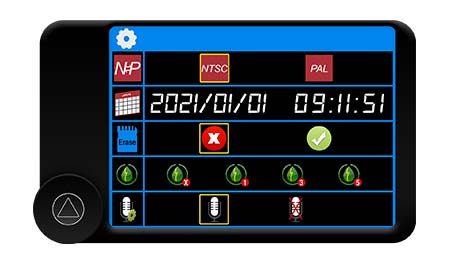
Click to download installation instructions...
Click to download firmware update files...
SourcePWR Programming
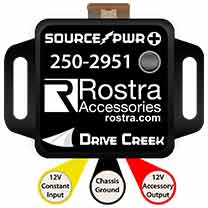
Click for announcement...
SourcePWR Accessory Wiring
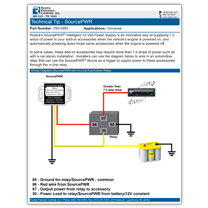
250-8950 Password Reset
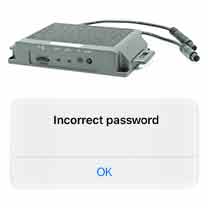
Click to view instructions...
Global Cruise Troubleshooting
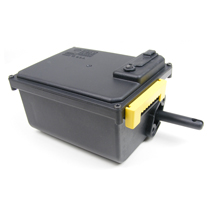
Click to download instructions...
Dash-Mount Switch Wiring
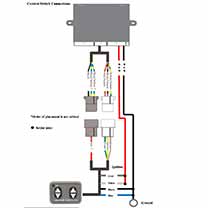
iPhone Muting with Con-Verse
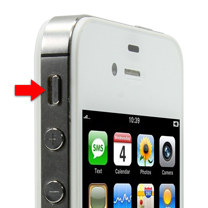
2014 Kia Soul Cruise Control
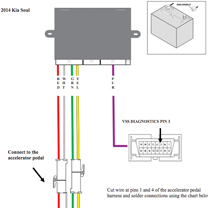
Camera Angles
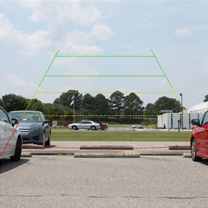
- Cruise Control: 250-1774
- Cruise Control: 250-1775
- Cruise Control: 250-1779
- Cruise Control: 250-9000
- Cruise Control: 250-9001
- Cruise Control: 250-9003
- Cruise Control: 250-9004
- 04-07 Ford F-series 250-1223
- Ford Freestar/Windstar VSS
- 2005 Suzuki Forenza/Reno
- Nissan Sentra Bracket
- Mazda Miata Bracket
- Android 2.2 Audio Streaming
- BlackBerry® Call Settings
Please select your vehicle's year, make, and model below.
Installer Note: Rostra cruise control products purchased through eBay, Amazon, or Walmart are not eligible for technical support. Cruise control products must be purchased through an authorized distributor to receive technical support.
Cruise Control Notes
We do not recommend using any Rostra cruise control systems on motorcycle, ATV, or other non-automotive applications as we do not validate the operation of these units on these vehicles. Due to safety concerns surrounding these installations, Rostra representatives are unable to provide technical support on these applications.
Frequently Asked Questions
What are my options for acquiring cruise installation information?
Located below this FAQ section, you will find installation manuals for each product Rostra manufacturers including aftermarket cruise controls, backup camera systems , ultrasonic parking assist systems , seat heaters , and automotive lumbar support .
To acquire both vehicle speed signal (VSS), brake wire, and tachometer wiring colors and locations, please use our VSS Search above. If you do not see your vehicle listed, please download Rostra forms Form #4428 (for vehicles built between 1996 and 2009) or Form #4429 (for vehicles built between 1986 and 1995).
Does a Rostra cruise control kit come with everything I need for an installation?
The majority of Rostra-manufactured cruise controls systems are sold as complete kits. As well, Rostra manufactures universal cruise control units that often require the purchase of additional items to function with certain vehicles including vehicle speed signal (VSS) generators and control switches . To get a listing of exactly what parts will be necessary for your vehicle, please use the Vehicle Search menu at the top of the page or download our Cruise Control Quick Reference Guide . If you have questions about a customized cruise kit or other vehicle applications, feel free to call our Customer Service department at (800) 782-3379 .
Where is the LED on a Rostra Global Cruise unit?
The LED is a surface-mount light on the circuit board to the left of switch number ONE of the programming switches.
Where are the programming switches on a Rostra Global Cruise unit?
The programming switches are located under the black rubber grommet on top of the cruise module. (See images below)
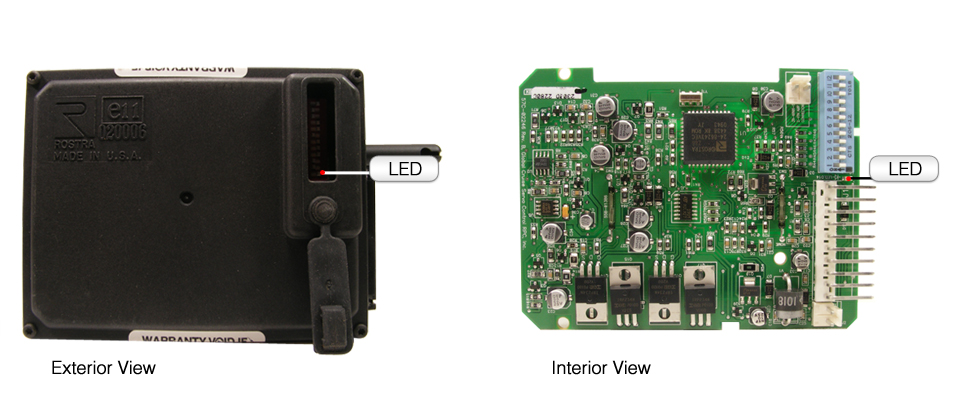
What is Gain (sensitivity)?
Gain is how the cruise control reacts to both road conditions and engine size. Always start at the factory setting which is Mid-Gain. If the vehicle surges while the cruise is engaged, you will need to adjust the gain setting. A fast surge, when the vehicle speeds up rapdily above the cruising speed, requires the gain to be lowered. Set the gain to Low or Extra-Low if needed. A slow surge, where the vehicle slows well below the cruising speed, requires the gain to be raised to High.
What is Engine/Setup Timer?
Engine/Setup Timer is how fast the cruise control retracts the cable once the cruise is set. Always start at Low. If the vehicle drops below the set cruising speed but then recovers, set to Medium. Set to High or Extra-High if still not acceptable.
Will a steering wheel-mounted switch work on my vehicle?
RF steering wheel-mounted switches can be installed on several vehicles, but are not recommended for every vehicle. To find out if your vehicle has an RF switch available, check out our application guide .
What if my vehicle is not listed?
Have no fear! Just because your vehicle is not listed in our application guide doesn't necessarily mean we don't offer a cruise control kit for it. Call our customer service department at (800) 782-3379 for specific application questions.
LED Tail Lights Note
The use of LED tail lights requires a five-function automotive relay to bypass the brake system. LED tail lights do not let the violet wire (cold side of the brake switch) see ground through the brake lights, themselves. Wiring in a relay is as follows:
Click here to download a PDF version of this relay wiring diagram.
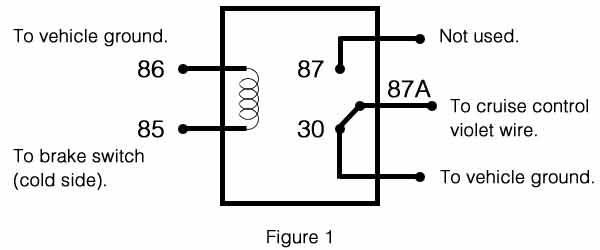
All settings are based on 1/8-inch slack in cruise control cable. More slack will cause the cruise control to surge or lose speed once set.
Product Installation Manuals
Installer Note: "XX" designation below used in place of speed limit setting (i.e., 250-9608- 65 )
- 250-9806-XX
- 250-9808-XX
- 250-9809-XX
- 250-9810-XX
- 250-9811-XX
- 250-9812-XX
- 250-9813-XX
- 250-9817-XX
- 250-9819-XX
- Form #4281106
- 250-9823-XX
- 250-9824-XX
- Form #4281103
- 250-9829-XX
- 250-9835-XX
- 250-9836-XX
- 250-9839-XX
- 250-9842-XX
- 250-9846-XX
- 250-9848-XX
- Form #4281067
- 250-9850-XX
- 250-9851-XX
- Form #4281110
- 250-9852-XX
- Form #4281112
- 250-9853-XX
- 250-9858-XX
- 250-9861-XX
- 250-9866-XX
- 250-9867-XX
- 250-9868-XX
- Form #4281044
Electronic Vehicle Speed-Limiter Two-Way Relay Wiring
- 250-9509-NS
- Operator's Manual
- 250-9608-NS
- 250-9609-NS
- 250-9612-NS
- 250-9634-NS
- 250-9624-NS
- Form #4281118
- 250-9635-NS
- 250-9636-NS
- 250-9646-NS
- 250-9647-NS
- Form #4281090
- 250-9648-NS
- Form #4281065
- 250-9651-NS
- Form #4281114
- 250-9652-NS
- Form #4281113
- 250-9661-NS
- 250-9668-NS
- Form #4281041
- REV. G, 05-21-12
- REV. L, 02-17-09
- REV. A, 10-22-01
- 250-1729-TB
- REV. A, 06-29-04
- REV. H, 09-06-11
- REV. A, 09-08-09
- REV. A, 09-28-05
- REV. RTP, 08-17-04
- REV. B, 03-04-14
- REV. C, 04-07-11
- REV. D, 09-02-09
- REV. F, 06-10-10
- REV. C, 08-08-08
- REV. C, 08-31-11
- REV. J, 10-10-12
- REV. F, 03-12-13
- REV. RTP, 05-08-12
- REV. A, 10-10-12
- REV. C, 05-16-12
- REV. C, 09-14-10
- REV. A, 12-12-16
- REV. H, 06-15-12
- REV. E, 09-30-10
- REV. B, 07-29-10
- REV. B, 09-14-10
- REV. G, 07-29-24
- REV. B, 07-01-13
- REV. B, 12-21-10
- REV. B, 5-15-12
- REV. RTP, 04-25-12
- REV. B, 04-08-13
- REV. A, 08-08-08
- REV. E, 04-00-10
- REV. H, 04-07-11
- REV. F, 04-07-11
- REV. B, 09-08-09
- REV. RTP, 10-26-10
- REV. D, 12-21-10
- REV. D, 04-00-10
- REV. C, 01-27-11
- REV. A, 04-07-11
- REV. F, 08-09-12
- REV. RTP, 01-11-07
- REV. A, 06-29-12
- REV. A, 01-16-15
- REV. A, 02-07-11
- REV. B, 11-22-13
- REV. A, 05-16-12
- REV. RTP, 07-26-11
- REV. RTP, 03-20-15
- REV. A, 5-27-15
- REV. E, 10-09-12
- REV. RTP, 02-01-11
- REV. C, 04-09-14
- REV. F, 01-19-15
- REV. B, 02-04-13
- REV. RTP, 08-08-11
- REV. C, 09-07-12
- REV. RTP, 10-19-12
- Form #4281117
- REV. A, 11-30-12
- REV. A, 06-05-13
- REV. A, 02-12-13
- REV. A, 01-17-13
- REV.A, 01-16-13
- REV. C, 2-24-14
- REV. B, 2-7-13
- REV. A, 01-23-13
- REV. A, 01-24-13
- REV. A, 06-05-14
- REV. A, 07-21-14
- REV. A, 08-29-2014
- REV. A, 09-05-2014
- REV. A, 04-24-2013
- REV. A 02-06-2014
- REV. A, 07-12-16
- Form #4281086
- REV. A, 12-21-2022
- Form #4281064
- REV. A, 05-25-22
- Form #4281109
- REV. A, 07-21-23
- Form #4288111
- REV. A, 02-22-19
- REV. A, 01-2-2024
- REV. A, 02-20-13
- REV. B, 07-15-20
- REV. A, 02-18-20
- Form #4281039
The below manuals are available for download for aftermarket cruise control systems that are no longer in production from Rostra. Rostra no longer provides technical support for these model cruise control units.
- 3-R to 10-R Manual
- 16-R Manual
- MicroCruise 3
- MicroCruise 4
- UltraCruise II
- 250-1903-BZP
- Instruction Manual
- 250-1920-FZ
- REV. A, 02-28-13
- REV. B, 07-27-12
- 250-7500-CHR1
- REV. RTP, 12-17-09
- 250-7500-CHR2
- 250-7500-CHR3
- 250-7500-CHR4-V
- 250-7500-CHR5
- 250-7500-CHR6
- 250-7500-FD1
- REV. RTP, 02-03-11
- 250-7500-FD2
- 250-7500-FD3
- 250-7500-FD4
- REV. RTP, 01-13-11
- 250-7500-FD5
- 250-7500-FD6
- REV. RTP, 05‐12‐11
- 250-7500-GM1
- 250-7500-GM2
- 250-7500-GM3
- 250-7500-GM4
- 250-7500-GM7
- REV. RTP, 08-24-10
- 250-7500-GM8
- 250-7500-GM14
- 250-7500-HK1
- 250-7500-HK2
- 250-7500-HK3
- 250-7500-HK4
- 250-7500-HK5
- 250-7500-HK6
- 250-7500-HK7
- 250-7500-HN1
- REV. RTP, 06-11-09
- 250-7500-HN2
- 250-7500-HN5
- 250-7500-HN6
- REV. RTP, 02-17-10
- 250-7500-HN8
- REV. RTP, 05-12-11
- 250-7500-HN9
- 250-7500-MZ1
- 250-7500-MZ2
- 250-7500-NS1
- 250-7500-NS2
- 250-7500-NS6
- 250-7500-NS7
- 250-7500-NS8
- 250-7500-SPK1
- 250-7500-SPK2
- 250-7500-SUB1
- 250-7500-SUB2
- 250-7500-TY1
- REV. A, 10-12-09
- 250-7500-TY2
- 250-7500-TY3
- 250-7500-TY4
- 250-7500-TY5
- 250-7500-TY6
- 250-7500-TY8
- 250-7500-TY9
- 250-7500-VV1
- 250-7500-VW1
- User's Manual
- PC Software
- REV. A, 1-28-2015
- Install Manual
- REV. 2, 1-14-2018
- Owner's Manual
- Installation Guide
Lumbar Support Systems
- REV. F, 11-02-07
- REV. A, 07-03-07
- REV. B, 09-06-06
Seat Heating Systems
- REV. RTP, 11-18-10
- REV. B, 07-11-2014
- REV. B, 12-04-12
- 250-1870-TOY
- REV. A, 09-30-16
Universal DRL Systems
- 260-1000-UNI
- REV. A, 05-05-11
- 260-1002-UNI
- 260-1004-UNI-M
- 260-1006-UNI
- 260-1008-UNI
Vehicle-Specific DRL Systems
- 260-1024-CAMSE
- REV. A, 01-16-14
- 260-1026-CAMLE
- REV. RTP, 06‐29‐12
- 260-1002-COR
- REV. RTP, 08-28-12
- 260-1020-CRUZ
- REV. B, 12-05-12
- 260-1004-FJ1
- REV. A, 1-2-2013
- 260-1004-FJ2
- 260-1002-HN1
- REV. RTP, 09-19-11
- 260-1022-HN2
- REV. RTP, 03-28-12
- 260-1015-LX1
- REV. RTP, 06-06-11
- 260-1004-LX3
- REV. RTP, 04‐25‐12
- 260-1022-MT1
- REV. A, 02-21-13
- 260-1022-MT2
- 260-1002-SB1
- REV. A, 09-19-11
- 260-1002-TAC1
- REV. RTP, 08-10-11
- 260-1004-TUNC
- REV. A, 01-18-12
- 260-1022-TUNC
- 260-1004-TUNU
- 260-1022-TUNU
- 260-1004-TUNB
- 260-1004-TUNW
- 260-1030-TUNU
- REV. B, 05-01-14
- 260-1030-TUNB
- 260-1030-TUNW
- 260-1030-TUNG
- 260-1030-TUNS
- 260-1002-XB1
- REV. RTP, 12-15-11
- 260-1024-JEEP
- REV. RTP, 2-2-15
- 260-1024-F150X
- REV. RTP, 9-15-15
- Installation Manual
- 250-8208-TL
- 250-8215-IR
- 250-8160-BSC
- Form Download
- REV. A, 01-01-2016
- REV. A, 06-23-2016
- REV. B, 01-01-2016
- REV. RTP, 12-04-07
- REV. A, 09-02-09
- REV. A, 03-05-13
- REV. A 04-11-13
- REV. A, 03-14-13
- REV. A 08-08-13
- REV. A 04-02-14
- 250-8407-LC
- 250-8407-LC-C
- 250-8407-PRO
- Rev. B, 11-05-14
- REV. A, 01‐05‐2015
- 250-8408-LC
- 250-8408-LC-C
- Rev. B, 6/28/2013
- REV. A, 04-02-14
- Module Installation
- REV. A, 2-6-2015
- 250-8413-LC
- REV. A, 12-12-12
- REV. A, 5-29-2013
- REV. A, 02-06-2015
- 250-8414-LC
- REV. A, 09-17-2014
- REV. A, 08-26-2014
- 250-8418-MOD
- REV. A, 06-09-2016
- 250-8419-MOD
- 250-8420-MOD
- REV. A, 6-13-2016
- REV. A, 12-20-2016
- REV. A, 8-30-2016
- REV. A, 2-28-2017
- REV. A, 06-25-2018
- Wiper Conflict
Installation Instructions
- SYNC3 AV-IN Camera Interface Update
Software Update: 250-8452 Ford SYNC3 Multi-Camera Video Interface (Updated 6/2/2017)
Installer notes:.
- This update dated 06/02/17 will correct a black screen condition seen by some users.
- This update is only for use on vehicles with SYNC3 Official Versions 1.0 - 2.1 released for that specific vehicle.
- Use of updates from forums or other sources may not work as they are not specifically for your vehicle. Rostra can not guarantee proper operation of our camera interface system with non-official releases of SYNC3 software.
- This update will NOT work with systems running SYNC3 V2.2 or above. Rostra is currently working on a applicable system for vehicles with SYNC3 2.2. Current 250-8452 systems are not compatible with systems running Android Auto or CarPlay.
To Install This Update:
- Click here to download the file and unzip to your hard drive - DO NOT UNZIP DIRECTLY TO A USB STICK
- Format a USB drive to insure it is free of any files
- Copy the files from this download directly to the root directory of the USB Stick. You will see on folder and a series of files
- Start the vehicle and do not shut off until after the update is completed
- Place the USB drive into the camera interface USB outlet (The vehicle USB jack will not work)
- In the interface menu select System Settings, then select Update System.
- Allow the update to run until finished and remove the USB drive when instructed to on the screen.
- Allow the system to reboot.
- Shut the vehicle off, allow to sit for 5 minutes
- Restart the vehicle, check your interface settings
- Select System Settings, Select "System Reset" - Run reset to reboot the system completely
- The update is completed
- To confirm the update was completed successfully Press the System Info Icon under settings. The Version line should end with: 17-04-01
- Installation Notice
- REV. A, 6-01-2017
- REV. A, 1-10-2018
- 2018 Update
- REV. A, 1-18-2018
- 2018 Software
- CUE IO5/IO6
Software Update: 250-8450/250-8451 General Motors Multi-Camera Video Interface (Updated 2/9/2017)
This update adds the ability to select Blind Spot Cameras when moving as well as addresses a bug when the rear camera power was wired incorrectly.
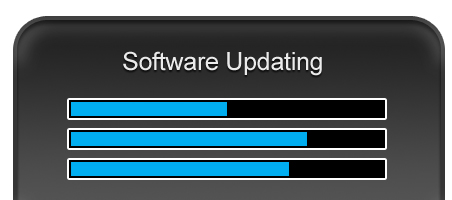
- Download the appropriate update for the unit (see below), make sure they use the correct one for the correct model.
- After downloading the update, unzip the update and then copy it to a blank USB drive.
- Place the USB drive into the interface USB port on the module cable that came with it.
- Select System in the Interface menu on the car radio screen.
- Select Update system.
- Select YES to update.
Let the update run and when done it will tell them to remove the USB stick, and then the system will re-boot.
If you see a message saying "Update file not found" or "Update not found" make sure the files were copied to the usb root directory and not in a directory on the USB.
Student Detection System
- Programming
- Installation
- Diagnostics
For general product inquiries, or to find a distributor in your area, please use the form on our Contact page. For technical assistance with automotive accessories via e-mail, please fill our the form below and one of our experienced technical service representatives will contact you soon. For assistance with vehicle application information, please call us toll-free at 1-800-782-3379.
Contact Information
Vehicle Information/Purchase Information
Please provide a description of your problem below.
Download a copy of Rostra's 3 Year/36,000 Mile warranty registration card by clicking here .
The Bluetooth® logo is a registered trademark owned by Bluetooth SIG, Inc. and any use of such mark by Rostra is under license. Other trademarks and trade names are those of their respective owners.
The Trademark BlackBerry is owned by Research In Motion Limited and is registered in the United States and may be pending or registered in other countries.
iPhone is a trademark of Apple Inc.
Rostra is a leading manufacturer of automotive comfort, safety, and convenience accessories including electronic cruise control systems, vehicle speed limiters, backup camera relocation kits, LED lighting, exterior vehicle camera systems, automotive lumbar supports and seat heaters, driver alert systems, and more.
Rostra: 2351 J. Lawson Blvd. Orlando, FL, 32824
WHAT OUR CUSTOMERS SAY
" Just what I needed for my 1962 Thunderbird! Before installing this, I would get leg cramps holding the throttle constant while cruising, I swear the throttle return spring was originally a bed spring. Installed this beauty before taking my trip down RT 66 in 2015. Finally, 7500 miles in comfort! "
Jim H. - United States
250-1223 Universal Electronic Cruise Control
" This is great. It installed pretty easily. I put it on my F-350 so I can park easier since my front camera is obstructed my LED lights and a light bar. I easily installed the sensors in the air dam below the bumper. "
Schawn D. - United States
Forward-Facing Parking Sensor System
" This installed very easily. I highly recommend it for anyone who needs this feature to make their car seat more comfortable. But this does require a high level of car handy skills, as you need to significantly disassemble a car seat. "
Sam G. - United States
Universal Lumbar Support System
" I installed this in a 2018 RZR RS one. I ride in the winter and have only a windshield. I installed the seat heater and it keeps me very warm. "
Ron B. - United States
Universal Seat Heater
" Once installed, the Jeep is more noticeable as one would expect. This is a very good safety upgrade--I was surprised DRL's were not standard on Wranglers. I have had compliments from other Wrangler owners. "
Chessie T. - United States
Jeep Wrangler LED Fender DRL
Be the first to know about special promotions and product updates. Enter your email and subscribe to our newsletter.
© 2024 Rostra Accessories
- Vision Cross-Reference
- Privacy Policy
- About Rostra
- Cruise control Manuals
- Automobile Accessories
- Quick installation manual
Cruise control AP900Ci Quick Installation Manual
- page of 11 Go / 11
Advertisement
Quick Links
Summary of contents for cruise control ap900ci.
- Page 1 CRUISE CONTROL AP900Ci/ GC90Ci QUICK INSTALLATION MANUAL CAN-BUS CONNECTION Control Module (CM) Engine control module Diagnostic socket Ignition +12V T-harness ORANGE CAN High BLUE pos. 6 Accelerator connector BLUE/ WHITE CAN Low pos. 14 Model specific T-harness will be connected between...
- Page 2 Pedal Learning Mode audible signals clear programing and repeat the test. Sometimes will test pass easier if on step 1 to start the engine. Look software unlock video: AP900Ci/ GC90Ci quick installation manual ProTeam OÜ...
- Page 3 * Pressing the pedal Release BRAKE 95% is easy if to insert Pedal learning Installation is done! a piece of cardboard pedal performed Go to test drive. under the pedal AP900Ci/ GC90Ci quick installation manual ProTeam OÜ...
Page 4: Diagnostic Mode
- Page 5 1 step LONG HIGH HIGH Press and hold Press SET key 4 Release BRAKE- Press briefly Stop safely the BRAKE pedal times setup completed. BRAKE pedal vehicle (lift CM up 4x) AP900Ci/ GC90Ci quick installation manual ProTeam OÜ...
Page 6: Gain Adjustment
- Page 7 SET key once- system will start to Release pedals, switch search next suitable CAN- ignition OFF. software. To complete setup perform Software unlock (Ch. 2) AP900Ci/ GC90Ci quick installation manual ProTeam OÜ...
- Page 8 If speed limiter is in analog mode but it’s needed to activate CAN mode just perform CAN search according chapter 7. When CAN software will be found turns limiter to CAN mode and starts to work without performing “Software unlock”. AP900Ci/ GC90Ci quick installation manual ProTeam OÜ...
Page 9: Analog Connections
- Page 10 (lift CM up 4x) Learning of speed signal must be performed in analog mode but with the same procedure is possible to calibrate speed signal also in CAN mode. Procedure Release BRAKE- completed setup completed. AP900Ci/ GC90Ci quick installation manual ProTeam OÜ...
Page 11: Error Codes
This manual is also suitable for:, rename the bookmark, delete bookmark, delete from my manuals, upload manual.
MCCRUISE INSTRUCTION SETS ARE NOW AVAILABLE ON PRODUCT PAGES. THESE MANUALS ARE ONLY AVAILABLE IN ENGLISH.
INSTRUCTIONS
Complete instructions are available on Google Drive. The product NAME and Sku, in that product, define which instructions you need. The suffix: TBW; servo & Vac_Upgrade point you to the correct folder
They are sorted in folders under:
- Instructions ATV (QuadCruise)
- Instructions Bike (MCCruise)
- Instructions Trike
- Instructions Tractor
- Instructions ATV Speed Limiter
Installation manuals are in each folder and Setup, Operator and Trouble Shooting guides are in the Additional Manuals folders for each product range. The following is an example for MCCruise for motorcycles:
- Go to the ' Instructions Bike' folder first, to find your Installation Instructions
- Select the Model , checking the Sku (in brackets) matches your specific product of interest - download the instructions
- Next, download the supporting manuals for that kit from the 'Additional Manuals' folder here .
- If you are buying a Vac_Upgrade kit, go to the ~Vacuum Actuator folder in the Manufacturer folder to find your installation instructions and download them. Next, download the MCS8000C electric servo instructions above, BUT you also need Instructions Bike / MANUALS / Electric Servo instead of Vacuum Actuator supporting manuals to install upgrade kits.
- It is vital you use the correct manuals for your HARDWARE: MCS10000TBW; MCS8000TBW or MCS8000C (servo) - see the label on your cruise computer.
Find Our Store
13/137-145 Rooks Road Nunawading 3131 AUSTRALIA Email: [email protected] Phone: +61 3 9808 2804
- Privacy Policy
- Access Installation Documents
- Videos & Instructions online
- Accessories, Tools & Spares
- Testimonials
- Bikes Wanted
Join our mailing list for updates
Crafted by FirstWire
Join us and get nice things
Free stuff and general goodness
*By completing this form you're signing up to receive our emails and can unsubscribe at any time.

IMAGES
VIDEO
COMMENTS
The cruise control system controls the speed of your car the same way you do -- by adjusting the throttle position.But cruise control actuates the throttle valve by a cable connected to an actuator, instead of by pressing a pedal.The throttle valve controls the power and speed of the engine by limiting how much air the engine takes in (see How Fuel Injection Systems Work for more details).
Just press the gas pedal to bring your car up to the new speed, and hit the "SET" button again. This will set cruise control at the new speed. If your car has a +/- button for cruise control, press this when you want to raise or lower your car's speed. Part 2.
1. To turn the feature on, press the cruise control On/Off button on the steering wheel. Your vehicle will default to the type of cruise control you last used when you turned your vehicle off. When the system is turned on, you'll see a white Adaptive Cruise Control icon in your cluster display or on your Head-Up Display, if your vehicle has ...
Adaptive cruise control supplements conventional cruise control with an active vehicle-to-vehicle distance control feature. Designed for use on freeways and express ways, in vehicle-to-vehicle distance control mode, your car automatically accelerates or decelerates in order to maintain a preset following distance from the vehicle traveling directly ahead of you.
First, Ford's adaptive cruise control disengages any time the clutch pedal is pressed. So if you engage adaptive cruise control on the highway and you're in fourth, and it comes time to upshift, cruise control turns off when you shift into fifth or sixth. If you want to re-engage it, you have to turn it back on after you're done with your ...
Cruise control was originally only found on high-end luxury cars, but now even the smallest cars often have it fitted as standard. If you have never used cru...
Cruise control work with a manual transmission just the same way it does with an automatic. Drivers set their cruising speed with a button press, and the system works the throttle automatically to ...
Beyond Conventional Cruise Control. If your vehicle is equipped with Adaptive Cruise Control, it can let you maintain a preset speed and distance from the vehicle ahead. Adaptive Cruise Control with Stop-and-Go technology not only lets you keep a safe distance between your vehicle and the vehicle ahead, it can also help you come to a complete stop.
If your having trouble locating someone to install your new cruise control, give us a call. We have affiliates across the country that can help. Chrysler/Jeep/Mercedes. 2006-2012 Caliber 250-9001; ... 2005-2008 Pontiac Vibe w/manual transmission 250-1771; 2005-2010 Saturn Ion 250-1774; 2005-2006 Pontiac Torrent 250-1774; 2005-2006 Chevy Equinox ...
Common cruise control icon on dashboards specified by ISO-7000-2047, ISO 2575:2010, and ISO 6727. Another icon exists for the more modern adaptive cruise control, but some cars also use the cruise control icon for the speed limiter function, which has no standard icon.. Cruise control (also known as speed control, cruise command, autocruise, or tempomat) is a system that automatically controls ...
To use Cruise Control, turn it on first by pressing the button on the end of the control stalk behind the lower right side of the steering wheel. The green cruise control icon will appear in the instrument display to show the system is ready. Then accelerate to the speed you want, and press the stalk down to set it.
Accelerate to the desired speed, which must be more than 25 km/h (16 mph). Adjust the system to the desired vehicle speed using the accelerator pedal. Press the RES switch up (SET+) or down (SET-) to start cruise control. The cruise control indication (green) in the instrument cluster turns on at the same time.
You can cruise control with a manual transmission. It doesn't work half as well as it does with automatic transmissions as it still regulates the car's speed when you are cruising. But the system tends to disengage the moment you slow down or when you press the clutch. In that regard, while cruise control does indeed work with cars with ...
In order to locate the VSS and TACH signals, consult a Vehicle Shop Manual, our. Vehicle Technical Guide (Rostra Form# 4429 or 4428), or call our Technical Service Department at (800) 732-4744, Fax us at (910) 276-3759 (USA) or visit us on the web at www.rostra.com.
with the Cruise Control, SWITCH NUMBER 7 will have . to be . OFF. If unsure whether control switch is "OPEN . CIRCUIT" or "CLOSED CIRCUIT", look at label of box . in which the control switch was packaged. NOTE 3: IF ANY OF THE 10 SWITCHES NEED TO BE . CHANGED AFTER INSTALLATION OF THE CRUISE . CONTROL, CONTROL SWITCH AND THE VEHICLE
III. Turn on your sewing machine. IV. Flip the "Cruise" switch located on the face of the Cruise Control Brain. Very slowly, the machine will begin stitching. V. Start moving the sewing machine, and the Cruise Control Brain regulates the stitch length. Move the machine slowly, and the machine stitches slowly.
On older manual cars with cruise control, the cruise control is disabled when you press the clutch. Whereas, on newer car models, you can change gears any time you want. However, some limit how long you can press the clutch in. For example, it will disable the cruise control if you press the clutch for more than 2 seconds.
When turning on the cruise control feature in a manual transmission vehicle, ensure that your car is traveling at a steady pace and is in the right gear. After reaching the desired speed, activate this handy feature by pressing the "set" button located on the steering wheel. To adjust your cruising speed, use either the "+" or ...
The list above does not represent an exhaustive list of situations that may interfere with proper operation of Traffic-Aware Cruise Control. Traffic-Aware Cruise Control can cancel unexpectedly at any time for unforeseen reasons. Always watch the road in front of you and stay prepared to take appropriate action. It is the driver's ...
The cruise main indication (white) is displayed. Accelerate to the desired speed, which must be more than 25 km/h (16 mph). Set the cruise control by pressing the SET switch at the desired speed. The cruise control is set at the moment the SET switch is pressed. Release the accelerator pedal simultaneously.
Out of Production Cruise Control Systems (No Longer Supported) The below manuals are available for download for aftermarket cruise control systems that are no longer in production from Rostra. Rostra no longer provides technical support for these model cruise control units. 3-R to 10-R Manual.
Page 1 CRUISE CONTROL AP900Ci/ GC90Ci QUICK INSTALLATION MANUAL CAN-BUS CONNECTION Control Module (CM) Engine control module Diagnostic socket Ignition +12V T-harness ORANGE CAN High BLUE pos. 6 Accelerator connector BLUE/ WHITE CAN Low pos. 14 Model specific T-harness will be connected between...; Page 2 Pedal Learning Mode audible signals clear programing and repeat the test.
The following is an example for MCCruise for motorcycles: Go to the 'Instructions Bike' folder first, to find your Installation Instructions. Select the Model, checking the Sku (in brackets) matches your specific product of interest - download the instructions. Next, download the supporting manuals for that kit from the 'Additional Manuals ...